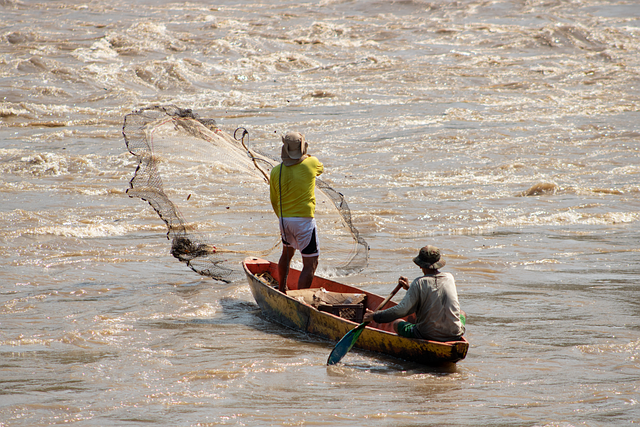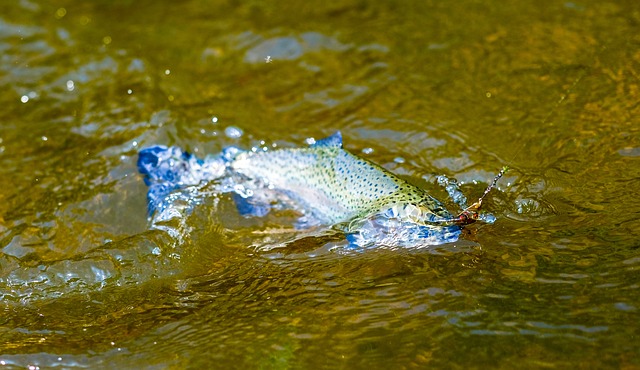The McKenzie River in Oregon is renowned for its premier McKenzie River fly fishing due to a thriving ecosystem supporting native fish like rainbow and cutthroat trout. Historical data on fish populations provides valuable insights into the river's health, enabling researchers to monitor changes and make informed decisions for sustainable practices. Advanced techniques such as acoustic fish counters and genetic analysis are used to study species diversity and migration patterns, guiding conservation efforts. Recent studies offer both opportunities and challenges for anglers, emphasizing the importance of responsible angling and habitat protection to preserve this valuable McKenzie River fly fishing destination.
“Unraveling the intricate web of the McKenzie River ecosystem is crucial for understanding its unique fish population dynamics. This article delves into the vibrant world of this renowned waterway, exploring historical data and current research methods. From the bustling fish habitats to the delicate balance maintained by nature, we uncover insights that are both scientifically fascinating and essential for McKenzie River fly fishing enthusiasts. Discover how these studies shape the future of this iconic river’s angling opportunities.”
- Understanding the McKenzie River Ecosystem
- Historical Fish Population Data: A Snapshot
- Current Studies and Research Methods
- Implications for Fly Fishing Enthusiasts
Understanding the McKenzie River Ecosystem

The McKenzie River, a revered waterway in Oregon, is renowned for its exceptional McKenzie River fly fishing opportunities. This majestic river cuts through scenic landscapes, offering a diverse ecosystem that supports a rich variety of aquatic life. Understanding this intricate web of life is key to preserving and managing the river’s delicate balance, especially for sport anglers who appreciate the challenge and beauty of catching wild trout in these pristine waters.
The river’s ecological health is shaped by various factors, including water flow, temperature regulation, and the presence of diverse habitats like riffles, pools, and underwater vegetation. These elements contribute to a thriving population of native fish species, such as rainbow trout, cutthroat trout, and bass. By studying and monitoring these populations, scientists and conservationists can gauge the river’s overall health and make informed decisions to ensure sustainable fishing practices for both recreational anglers and the environment.
Historical Fish Population Data: A Snapshot

The McKenzie River, a renowned destination for fly fishing enthusiasts, has been the subject of extensive studies to understand its unique fish population dynamics. Historical data on fish populations in this river date back several decades, offering valuable insights into the ecological changes over time. These early records provide a snapshot of the river’s health and the abundance of various species, which is crucial for comparing current conditions and managing the resource sustainably.
Researchers have meticulously documented the presence and numbers of different fish varieties, including trout, salmon, and native species, throughout the McKenzie River system. The data reveals fluctuations in population sizes, influenced by natural factors like river flow rates and water temperatures, as well as human activities such as fishing pressure and habitat alterations. By studying these historical trends, scientists can identify patterns, assess the impact of environmental changes, and make informed decisions to preserve the thriving fly fishing ecosystem that the McKenzie River is known for among its avid anglers.
Current Studies and Research Methods

The McKenzie River, renowned for its exceptional fly fishing opportunities, is also a subject of ongoing scientific interest. Current studies focus on understanding the river’s fish population dynamics to ensure sustainable management practices. Researchers employ advanced techniques and technologies, such as acoustic fish counters and genetic analysis, to monitor species diversity, abundance, and migration patterns. These methods provide valuable insights into the health of the ecosystem, allowing scientists to track changes over time.
Through these studies, researchers aim to unravel the complex interactions between various fish species, water quality, and environmental factors. By combining traditional sampling methods with innovative data collection tools, they strive to inform conservation efforts and guide regulations for responsible McKenzie River fly fishing practices, ensuring this iconic waterway remains a prime destination for anglers worldwide.
Implications for Fly Fishing Enthusiasts

For avid McKenzie River fly fishing enthusiasts, the latest population studies offer both exciting prospects and challenges. The health of the river’s fish populations directly impacts the accessibility and quality of this renowned fly-fishing destination. As researchers uncover insights into species diversity and abundance, anglers can anticipate more informed decision-making regarding their tactics and gear choices. Understanding the seasonal variations in fish behavior and distribution enables enthusiasts to time their visits optimally, enhancing their overall experience.
These studies also highlight the river’s resilience and the need for continued conservation efforts. The diverse range of fish species supported by the McKenzie River ecosystem is a testament to its natural beauty and the effectiveness of preservation initiatives. By adhering to sustainable practices, such as responsible angling methods and habitat protection, fly fishing enthusiasts can contribute to preserving this valuable resource for future generations.














